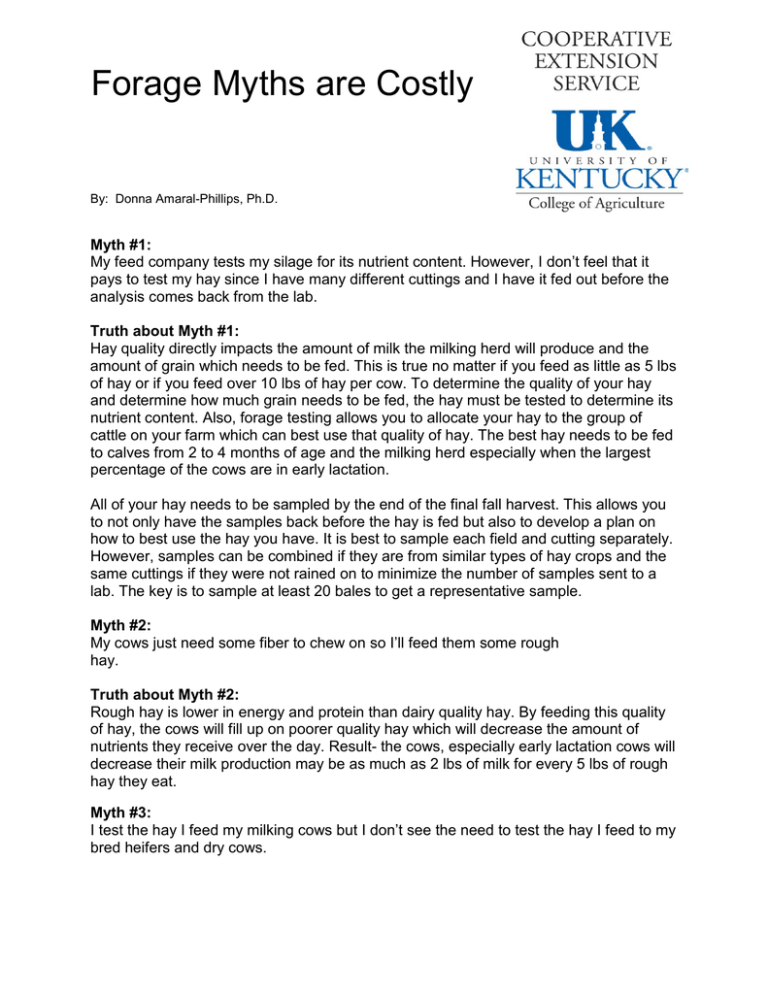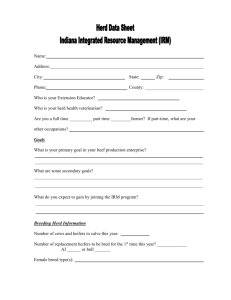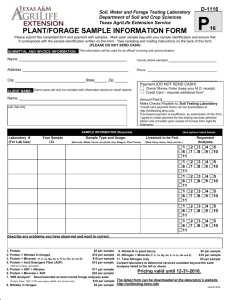Forage Myths are Costly
advertisement

Forage Myths are Costly By: Donna Amaral-Phillips, Ph.D. Myth #1: My feed company tests my silage for its nutrient content. However, I don’t feel that it pays to test my hay since I have many different cuttings and I have it fed out before the analysis comes back from the lab. Truth about Myth #1: Hay quality directly impacts the amount of milk the milking herd will produce and the amount of grain which needs to be fed. This is true no matter if you feed as little as 5 lbs of hay or if you feed over 10 lbs of hay per cow. To determine the quality of your hay and determine how much grain needs to be fed, the hay must be tested to determine its nutrient content. Also, forage testing allows you to allocate your hay to the group of cattle on your farm which can best use that quality of hay. The best hay needs to be fed to calves from 2 to 4 months of age and the milking herd especially when the largest percentage of the cows are in early lactation. All of your hay needs to be sampled by the end of the final fall harvest. This allows you to not only have the samples back before the hay is fed but also to develop a plan on how to best use the hay you have. It is best to sample each field and cutting separately. However, samples can be combined if they are from similar types of hay crops and the same cuttings if they were not rained on to minimize the number of samples sent to a lab. The key is to sample at least 20 bales to get a representative sample. Myth #2: My cows just need some fiber to chew on so I’ll feed them some rough hay. Truth about Myth #2: Rough hay is lower in energy and protein than dairy quality hay. By feeding this quality of hay, the cows will fill up on poorer quality hay which will decrease the amount of nutrients they receive over the day. Result- the cows, especially early lactation cows will decrease their milk production may be as much as 2 lbs of milk for every 5 lbs of rough hay they eat. Myth #3: I test the hay I feed my milking cows but I don’t see the need to test the hay I feed to my bred heifers and dry cows. Truth about Myth #3: In order to provide heifers and dry cows with the proper nutrition, forages must be tested and these results used to balance rations. First, the calf growing inside the cow or heifer gets the nutrients it needs at the expense of the cow or heifer. Thus, when heifers or dry cows are not provided the proper nutrition, the cow suffers not the calf growing inside of her. Secondly, we need to remember that the last two months before a heifer or cow calves sets the stage for how well she will milk this lactation. Providing inadequate amounts of energy, protein, minerals or vitamins results in less milk over the upcoming lactation. Early lactation cows make the most profit for their owners and nutrition before calving affects production and reproductive performance during early lactation. Thus, underfeeding protein or energy hurts the cow’s future production and profitability and does not decrease the size of the calf at birth. Myth #4: I had my hay tested and it contained 12% crude protein. Truth about Myth #4: For both beef and dairy cattle, sheep, and goats, energy is often times the nutrient which limits optimum performance not protein. Thus, when reviewing your forage analysis, the energy content should be reviewed first before the protein content. The energy content of your forage is not determined directly in the laboratory. Over the years, nutritionists have learned that the lower the fiber content (acid detergent fiber or ADF) of the plant, the higher the digestibility which in turn supplies the cow with more energy. When looking at your forage analysis, always evaluate the nutrients on a dry matter basis (with all the water removed). Thus, the most important number to review on a forage analysis is the ADF or NDF content of a forage on a dry matter basis not crude protein. For excellent quality forage: Crop Alfalfa Grass Hay Corn Silage ADF LESS THAN 30% ADF* 35 % ADF* 28% ADF* * Dry matter basis Educational programs of Kentucky Cooperative Extension serve all people regardless of race, color, age, sex, religion, disability, or national origin.





